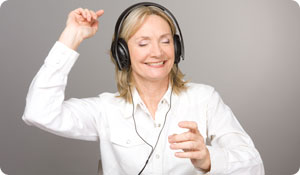
Elderly people are often unsteady on their feet and prone to falls, which can lead to serious complications. But a practice called eurhythmics, originally designed for students by the noted Swiss composer Emile Jaques-Dalcroze, may give them better balance and help them maintain their health.
A study at the University Hospitals and Faculty of Medicine of Geneva in Switzerland included 134 people older than age 65 who were deemed to be at increased risk of falling. They were randomly split into two groups.
One group immediately began a six-month program of eurhythmics, which involves walking in time to different kinds of music, turning in time to the music, incorporating props such as balls, hoops, and scarves while moving and interacting with other participants, and exaggerating the upper body while moving. The other group was assigned to begin eurhythmics six months later.
The results were undeniable—moving to music definitely helped the older people keep a sense of balance. During the six months that the first group engaged in eurhythmics, the researchers recorded 24 falls among the participants. At the same time, there were 54 falls in the control group, which was not yet engaged in the program. When the second group finally began its program of eurhythmics, similar results were seen. And both groups saw a reduction in the number of falls suffered even after the study was finished.
The researchers conducting the study say they are not sure what the exact neurological processes are by which eurhythmics helps the elderly attain better balance, but for those who teach it, there's no doubt that it does.
"Dalcroze eurhythmics classes promote physical coordination and mental acuity through the challenging and aesthetically satisfying experience of moving to music," says Dr. Kathy Thomsen, associate professor of music at Hamline University in St. Paul and the president of the Dalcroze Society of America. "The mind is focused and alert, the body is responsive and supple. We [will often] observe a senior walking slowly to class with a cane, and as soon as the music begins we see that same senior moving easily without assistance."
Dalcroze classes are offered to both adults and children nationwide and in other countries around the world.
Sources:
New York Times, www.nytimes.com
Dalcroze Society of America, www.dalcrozeusa.org





